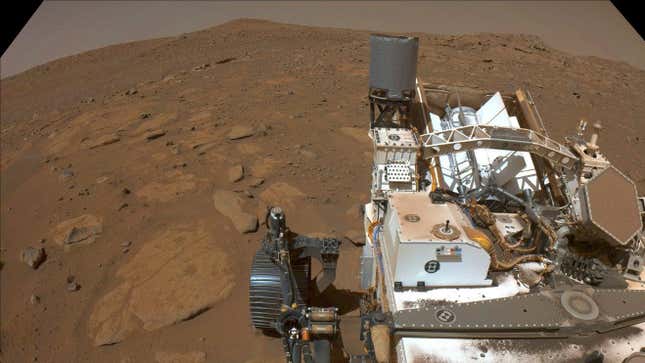
For the next two weeks, NASA will not be sending commands to its fleet of Martian rovers, orbiters, and spacecraft until the Sun moves out of the way.
The Mars solar conjunction is from November 11 to 25, a period that occurs every two years during which Earth and the Red Planet are on opposite sides of the Sun in their respective orbital path. During that time, ionized gas being emitted by the Sun could interfere with radio signals being sent from Earth to spacecraft on Mars, possibly resulting in odd behavior from the various rovers trekking across the Martian terrain.
Instead of risking misinterpreted commands, NASA is giving its Martian fleet the silent treatment for two weeks. The space agency announced that it will hold off on communication between mission command and the various spacecraft on or around the Red Planet, NASA announced on Friday.
That doesn’t mean the Mars gang is completely off the hook; they will still carry out limited data collection during this down time as they await to hear from their home planet once again. “Our mission teams have spent months preparing to-do lists for all our Mars spacecraft,” Roy Gladden, manager of the Mars Relay Network at NASA’s Jet Propulsion Laboratory, said in a statement. “We’ll still be able to hear from them and check their states of health over the next few weeks.”
Here’s what the different missions on Mars will be up to during the next couple of weeks. NASA’s Perseverance and Curiosity rovers will monitor changes in surface conditions, weather, and radiation while remaining parked in the same place on the surface of Mars, according to the space agency. Perseverance’s companion, the Ingenuity Helicopter, will use its color camera to study the movement of sand on Mars, which can pose an issue for other missions. The Mars Reconnaissance Orbiter and the Odyssey orbiter will continue imaging the surface of the Red Planet, while MAVEN will collect data on interactions between Mars’ atmosphere and the Sun.
During this time, NASA will still check on the overall health of its spacecraft save for two days when Mars will be fully hidden behind the Sun’s disk. Once the two-week period ends, the Martian missions will relay the data back to Earth and resume communication with ground control.
For more spaceflight in your life, follow us on X (formerly Twitter) and bookmark Gizmodo’s dedicated Spaceflight page.

